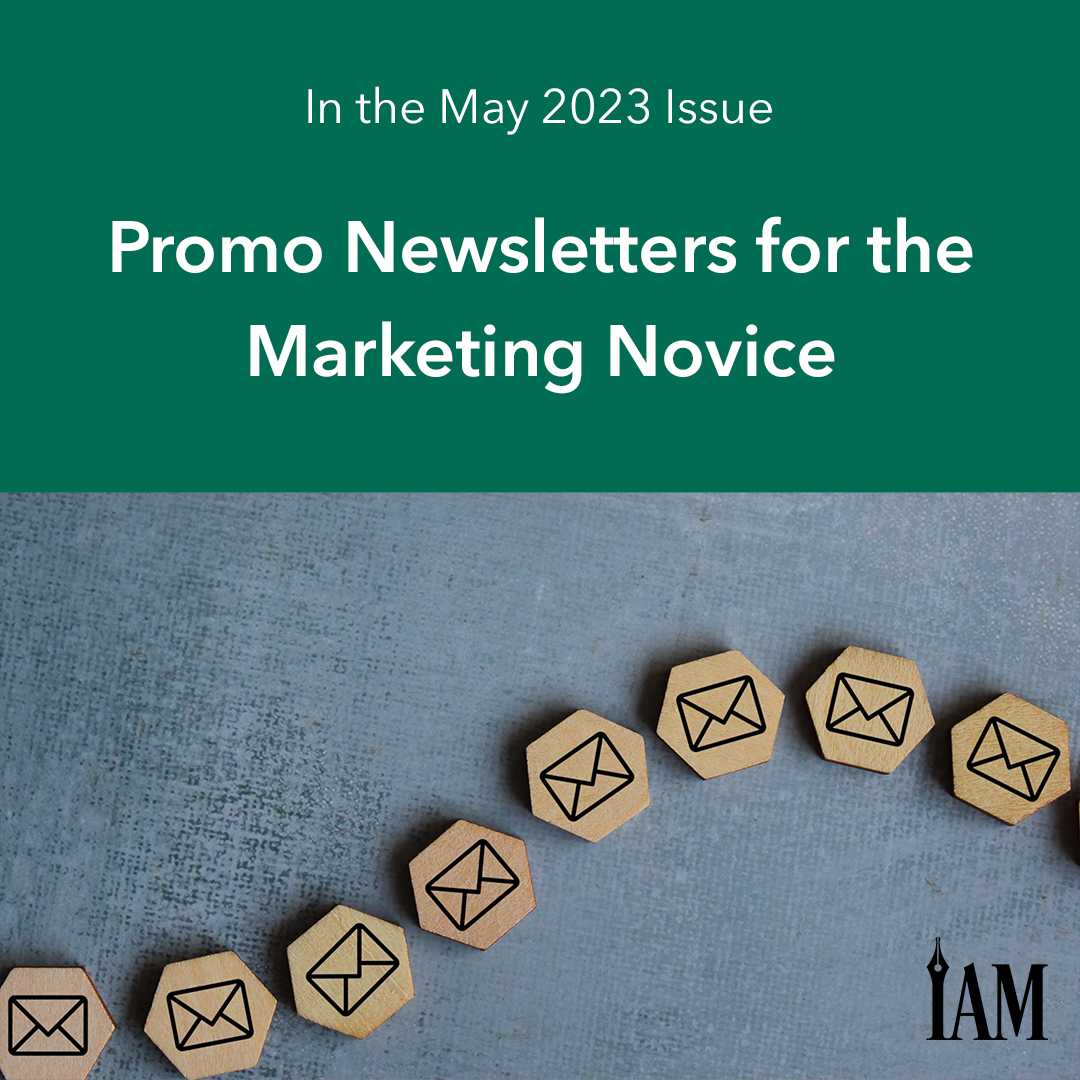For the first couple of years after I became an indie author, I struggled to get sales. But when I changed my strategy to use paid promotional newsletters, my sales grew significantly. It took a big mindset change for me to offer my first-in-series for free, but it completely changed the trajectory of my author career.
What Is a Paid Promo Newsletter?
Many sites offer authors and publishers the option to promote their books, and paid promo newsletters are a common option. Unlike your author newsletter, paid promo newsletters are run by for-profit companies that are constantly attracting subscribers. Authors or publishers will pay to advertise a book, which is usually offered for free or 99¢ to all the newsletter’s subscribers.
Paid promo newsletters usually have a short intro, then list all the free or cheap book offers—often three to seven books, but sometimes just one, and sometimes a dozen or more. Many newsletters allow subscribers to choose to receive books only from the genres they want to see, so readers who like Sci-Fi won’t get Romance novels, for example. While some companies run newsletters built to achieve other author goals, such as subscribers to an author’s mailing list, almost all focus on getting subscribers to download free books or purchase inexpensive books.
Some sites, like Snicks List (https://snickslist.com), Indies Today (https://indiestoday.com), and FreeBook Tips (https://freebooktips.com), offer to promote your books at no cost. They will list your book on their website, promote to their Facebook group or Twitter feed, or push to a forum—but never a newsletter. They often have stringent requirements for their listings and don’t guarantee placement. They will often attempt to upsell to social media channels or newsletters. I have never seen a bump in my sales when using these free websites—personally, I believe this is a case of “you get what you pay for.”
What Should You Promote?
Promo newsletters are more effective at getting subscribers to download free books than at selling books. For best results, promote a novel-length book that is a good, effective entry point to the rest of a series or a significant portion of your catalog. Book marketing experts often call this a “free first-in-series” (FFIS), even if the book isn’t the first book in a series. I prefer the term “entry point novel.” Some effective newsletters to promote entry point novels include Freebooksy (https://freebooksy.com), The Fussy Librarian (https://thefussylibrarian.com), Ereader News Today (https://ereadernewstoday.com), and Robin Reads (https://robinreads.com). I regularly use thirty different promo newsletters, so you have options available. Expect to pay between $25 to $100 per promotion.
You may have a short story or novella as a “reader magnet” and may be tempted to use it for your promoted book. However, most paid promo newsletters have length requirements, with 150 pages as a common minimum. Subscribers expect novels, not short stories, and meeting reader expectations is crucial to your success as an indie author. Shorter works are usually better suited to getting subscribers to your newsletter.
How Does This Boost My Sales?
Promo newsletters generally promote books that are free or nearly free, so authors won’t likely see much revenue from those downloads alone. Instead, authors make money from promo newsletters on read-through—readers buying their other books after finishing the promoted freebie. Make sure your entry point novel points to the next book in your series or catalog; immediately following the last paragraph of your entry point novel, put a link to the next book you want readers to buy. Many e-readers push viewers to a review or sales page after the last page, so including a link right after the last paragraph—not the last page—will get readers to buy your next book.
The more books you have in your series or catalog, the more money you can make on read-through. The average read-through from a free entry point novel to a book 2 in the same series is usually 3 percent to 5 percent, but the average read-through from book 2 to book 3 is about two-thirds, and from book 3 to the rest of the series is often 90 percent or higher. If you have a twenty-book series instead of a trilogy, you make more money on every entry point novel download. This is the essence of the “FFIS strategy.”
Unsure How to Make a FFIS Book?
If you're enrolled in KDP Select—often referred to as “being in KU,”—you’ll have the opportunity to make your book free for a few days each ninety-day period. If you’re a wide author, simply make the book free on non-Amazon platforms, then ask Amazon to price-match. You can find instructions on how to do this in social media groups for wide authors, like Wide for the Win, or in wide authors’ blog posts.
Promoting Books at 99¢ or More
Even promoting a low-cost book will almost never make its money back on the promoted book itself; selling a book at 99¢ nets you about 34¢ in royalties. Often, authors make money on read-through, just like on a FFIS.
There is one exception: You can make your money back by promoting a collection of your books for 99¢—the first three novels in a longer series, for example. This is often called a box set, though Amazon doesn’t let you use that term. The philosophy in this case is the same as promoting a single entry point novel, just on a larger scale. When I ran a promo for my first three-novel box set, I made a decent profit on the box set alone. More importantly, sales skyrocketed for the second three-book collection in that series—books 4, 5, and 6—which sold for $9.99.
Your ninety-nine-cent book buyers are more likely to buy the next book in the series than a FFIS; you can expect 10 percent to 30 percent of ninety-nine-cent buyers to get the next book. Robin Reads, The Fussy Librarian, eReaderIQ (https://ereaderiq.com), Bargain Booksy, and Ereader News Today are some newsletters that do well promoting ninety-nine-cent books.
Tracking Your Promos
Especially when starting out, it’s important to understand where you can effectively spend money. Although no promo newsletters provide sales data, you can get a good idea of your downloads and sales in each store’s reporting dashboard or with a tool like ScribeCount. See how many downloads or sales you received the day of the promo and the day after; this will show the effective promos—and the failures.
“Cost per download” is an effective way to determine the value of a promo. If a promo costs you $100, resulting in one thousand downloads, your cost per download is $0.10.
If you track your book 2 and book 3 sales over the next thirty days, you’ll get a rough idea of how much money each promo is making you. For example, in the $100 promo example:
- Entry point novel (book 1): One thousand downloads
- Book 2: Fifty purchases at $4.99 (5 percent read-through with a royalty of $3.50 each, or $175)
- Book 3: Thirty purchases at $4.99 ($105)
- Book 4: Twenty-five purchases at $4.99 ($87.50)
Your one thousand downloads have resulted in sales of $367.50. So each download makes you about $0.37. Since you paid $0.10 per download, you’ve made almost three times the return on your investment.
Stacking Your Promos
Some experts suggest you stack your promos—in other words, run promos on multiple sites on the same day, or on consecutive days. This can juice the book retailers’ algorithms, making your book more visible to buyers in their online store, which will sell more books. However, if you stack your promos and run a $30 promo, a $50 promo, and a $100 promo on the same day (or within a day or each other), you can’t separate the data to tell which promo made a profit or loss. When you’re starting out with promo newsletters, knowing where to spend your money is crucial to continued success, so it’s best to avoid running multiple promos simultaneously until you’ve experimented with each newsletter individually.
How Often Should You Run Paid Promos?
Repeating promos to the same book leads to a decreasing number of downloads. For this reason, I don’t repeat promos more than once every six months. The Fussy Librarian is the exception: I run their promo every sixty days and see a consistent number of downloads. The Fussy Librarian touts their ability to attract new subscribers consistently, so this may be why. Your experience will vary. Some newsletters that work well for others will not work for you, and vice versa. Some newsletters will have consistent results for you, while others will drop off dramatically with your second promo.
Promo Newsletters: Part of an Effective Book-Marketing Strategy
Although it’s important to understand best practices, your author journey will be unique. Many authors have found that a FFIS strategy with paid promo newsletters work for them; others have found success with ninety-nine-cent promos. Above all, do what works for you and your business.

